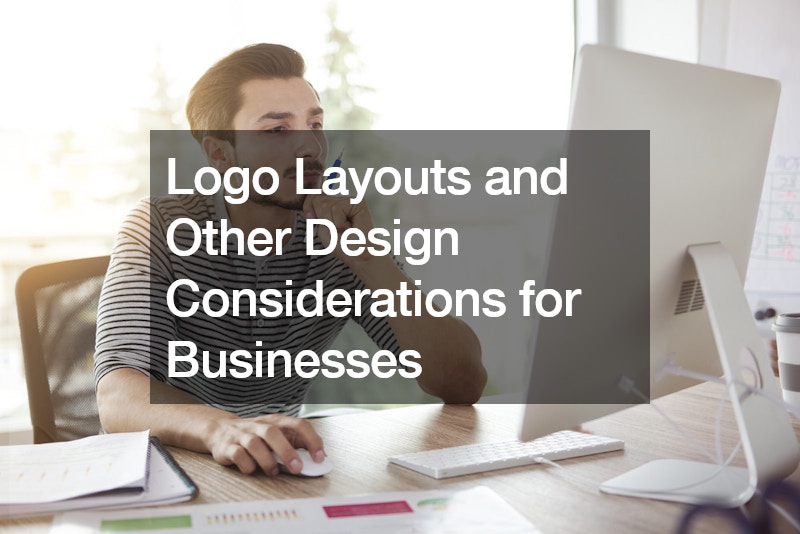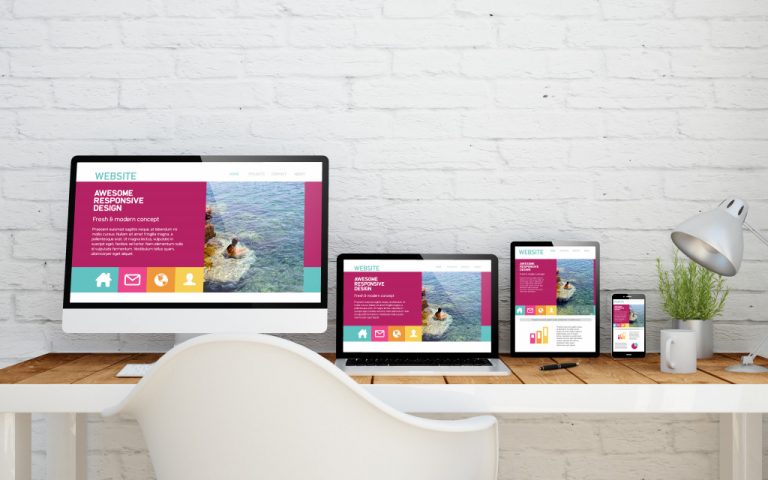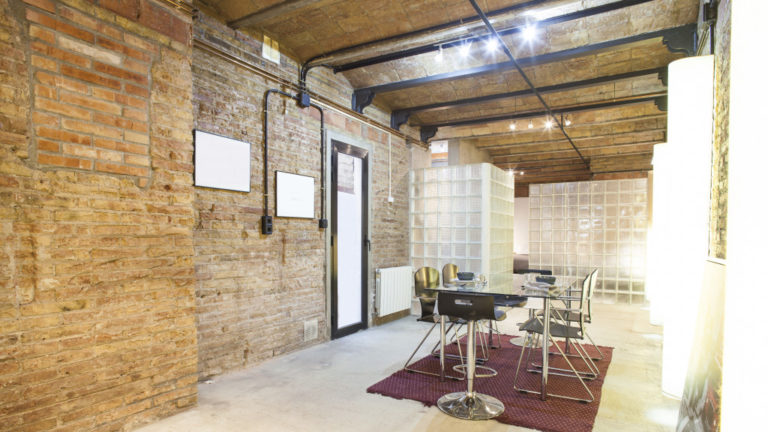Creating an effective logo is a crucial step in establishing a strong brand identity for any business. Logo layouts and other design considerations play a significant role in how your brand is perceived by your audience. A well-designed logo not only captures the essence of your business but also ensures consistency and recognition across various platforms and mediums. By paying attention to elements such as format, color, and balance, you can create a logo that effectively communicates your brand’s values and stands the test of time.
In this blog, we will explore essential aspects of logo design that businesses should consider. From choosing the right logo format to balancing text and imagery, these tips will guide you in creating a logo that resonates with your target audience. Whether you are a painting company or an estate planning service, understanding these design principles will help you develop a logo that is both functional and aesthetically pleasing.
Choosing the Right Logo Format
Choosing the right logo layouts is a foundational step in the logo design process. The format of your logo can determine how well it translates across different mediums, such as print, digital, and merchandise. Common logo formats include horizontal, vertical, and square layouts, each offering unique advantages depending on the application. A well-chosen format ensures that your logo remains legible and visually appealing, whether it appears on a business card, website, or billboard.
For a painting company, choosing the right logo format is particularly important. A horizontal layout might be ideal for signage on company vehicles, while a square format could work better for social media profiles and business cards. Additionally, considering the various surfaces where the logo will be displayed, such as paint cans, uniforms, and promotional materials, can help in making an informed decision. By choosing a versatile logo format, a painting company can maintain a consistent and professional appearance across all platforms, reinforcing its brand identity.
Balancing Text and Imagery

Balancing text and imagery is another critical aspect of effective logo design that’s important to consider along with logo layouts. The right balance ensures that both elements complement each other without overpowering or detracting from the overall message. This balance is particularly important for logos that include both the company name and a graphical element, as it helps create a cohesive and harmonious design. A well-balanced logo enhances readability and visual appeal, making it easier for customers to recognize and remember your brand.
For estate planning services, achieving a balance between text and imagery is essential. The logo should convey trust, professionalism, and reliability, which are key attributes for this industry. A clean and simple design with a balanced use of text and imagery, such as a stylized icon of a shield or tree paired with the company name, can effectively communicate these values. Ensuring that the text is legible and the imagery is not too intricate helps create a logo that is both visually appealing and meaningful. By carefully balancing text and imagery, estate planning services can create a logo that instills confidence and reflects their commitment to their clients.
Choosing Appropriate Colors
Choosing appropriate colors is a crucial aspect of logo design that can significantly impact your brand’s identity and recognition. Colors evoke emotions and associations, which in combination with logo layouts, can influence how your audience perceives your business. It’s important to choose colors that align with your brand values and resonate with your target audience. Additionally, considering color psychology can help you choose hues that convey the desired message and feel of your brand.
For an excavating contractor, choosing appropriate colors is particularly important to convey strength, reliability, and expertise. Earth tones such as browns and greens can reflect the nature of the work and suggest stability and growth. Incorporating these colors into the logo can help create an image that communicates the contractor’s commitment to quality and durability. By carefully choosing colors that align with the brand’s identity and the industry’s standards, an excavating contractor can develop a logo that effectively represents their services and appeals to their clients.
Ensuring Scalability and Versatility
Ensuring scalability and versatility is vital for any logo design. A scalable logo maintains its quality and legibility regardless of its size, ensuring that it looks good in both small and large formats. Versatility, on the other hand, refers to the logo’s ability to be used across different mediums and applications without losing its impact. A well-designed logo should be easily adaptable, whether it’s printed on business cards, displayed on websites, or embroidered on uniforms.
For an urgent care clinic, scalability and versatility are essential considerations. The logo layouts need to be clear and recognizable on a variety of platforms, from small digital icons to large outdoor signs. A simple, clean design with clear lines and minimal intricate details can help achieve this. By creating a logo that is both scalable and versatile, an urgent care clinic can ensure that its brand remains consistent and professional across all marketing materials and signage, reinforcing its identity and trustworthiness in the healthcare industry.
Incorporating Brand Elements

Incorporating brand elements into your logo design helps create a cohesive and unified brand identity. Brand elements and logo layouts can include specific fonts, colors, and symbols that are consistently used across all marketing materials. These elements help reinforce your brand’s identity and make it more recognizable to your audience. A well-designed logo that incorporates these elements can serve as the cornerstone of your overall branding strategy.
For a European auto mechanic, incorporating brand elements such as sleek, modern fonts and symbols associated with automotive excellence can enhance the logo’s effectiveness. Elements like a gear, wrench, or a silhouette of a car can convey expertise and precision. By integrating these brand elements into the logo design, the auto mechanic can create a strong visual identity that reflects their commitment to quality and high standards of service. This not only helps in building brand recognition but also in establishing trust and credibility with potential customers.
Prioritizing Readability
Prioritizing readability is essential for an effective logo design. A logo should be easily readable at a glance, whether it includes just text, an image, or a combination of both. Clear and legible fonts, appropriate spacing, and a balanced composition all contribute to the readability of a logo. Ensuring that your logo is readable helps in creating a lasting impression and allows your audience to quickly recognize and remember your brand.
For an asphalt contractor, prioritizing readability is particularly important due to the nature of the industry. The logo layouts might be displayed on construction equipment, signage, and vehicles, all of which require the text to be clear and easily legible from a distance. Choosing bold, sans-serif fonts and maintaining sufficient contrast between text and background colors can enhance readability. By focusing on these design aspects, an asphalt contractor can ensure that their logo is not only visually appealing but also easy to read, helping to establish a strong and recognizable brand presence.
Considering Cultural Sensitivity
Considering cultural sensitivity in addition to logo layouts is crucial, especially if your business operates in or plans to expand into diverse markets. Symbols, colors, and images can have different meanings in different cultures, and what is considered appropriate or appealing in one culture might be offensive or confusing in another. Ensuring that your logo is culturally sensitive helps you avoid misunderstandings and build a positive reputation across various cultural contexts.
For a pressure cleaning contractor, this consideration is important when designing a logo that may be used in multicultural communities. For instance, certain colors or symbols might have specific cultural connotations that should be taken into account to avoid misinterpretation. Conducting research or consulting with cultural experts can help ensure that the logo is universally acceptable and appealing. By being mindful of cultural sensitivity, a pressure cleaning contractor can create a logo that resonates positively with a diverse customer base, enhancing their brand’s inclusivity and acceptance.
Aligning with Brand Identity

Aligning with brand identity is a fundamental aspect of logo design. Your logo layouts should encapsulate the essence of your brand, reflecting its values, mission, and overall personality. Consistency between your logo and other branding elements helps create a cohesive brand image that is easily recognizable. This alignment ensures that your logo effectively communicates what your business stands for and resonates with your target audience.
For a commercial building contractor, aligning the logo with the brand identity is crucial. The logo should convey professionalism, reliability, and quality craftsmanship. Elements such as strong, clean lines and bold fonts can reflect the solidity and dependability of construction work. Colors like blue or gray might be used to symbolize trust and stability. By ensuring that the logo aligns with these brand elements, a commercial building contractor can build a strong, cohesive brand that appeals to potential clients looking for dependable construction services.
Using Negative Space Effectively
Using negative space effectively is a sophisticated design technique that can add depth and meaning to your logo layouts. Negative space refers to the empty or unused space around and within the elements of your logo. When used creatively, it can form shapes or convey hidden messages, making your logo more memorable and visually interesting. Effective use of negative space can also enhance the clarity and simplicity of your logo, making it more impactful.
For a local catering company, utilizing negative space in the logo design can create a visually appealing and clever representation of the business. For example, incorporating the shape of a fork or spoon within the negative space of a letter can subtly convey the culinary focus of the company. By thoughtfully using negative space, the catering company can create a distinctive and elegant logo that stands out and captures the essence of its services.
Testing Across Different Mediums

Testing your logo layouts across different mediums is a crucial step to ensure its versatility and effectiveness. A well-designed logo should look great on various platforms, including digital screens, printed materials, and merchandise. It’s important to check how the logo appears in different sizes, from small social media icons to large banners, to ensure it remains clear and recognizable.
For a fence company, testing the logo across different mediums is essential. The logo will likely appear on business cards, website headers, vehicle signage, and even on the fences themselves. Ensuring that the logo maintains its integrity and impact in all these applications is crucial for consistent branding. By testing the logo in various contexts, the fence company can ensure it communicates its brand effectively and maintains a professional appearance across all platforms.
In conclusion, creating an effective logo involves careful consideration of various design elements and principles. From choosing the right logo format and balancing text and imagery to choosing appropriate colors and ensuring scalability, each aspect plays a critical role in crafting a logo that resonates with your audience and reinforces your brand identity. Incorporating brand elements, prioritizing readability, considering cultural sensitivity, and aligning with brand identity further enhance the logo’s effectiveness.
Whether you are a painting company, an estate planning service, or a local catering company, paying attention to these design considerations will help you create a logo that stands out and supports your business goals. Additionally, using negative space effectively and testing the logo across different mediums ensures versatility and impact. By following these guidelines, you can develop a strong and memorable logo that serves as the cornerstone of your brand’s visual identity. Investing time and effort into thoughtful logo design will pay off in the long run, helping you build a strong, cohesive, and recognizable brand.












